Emotional Alchemy: How Interior Design Transforms Mood and Mindset

The spaces we inhabit have a profound impact a profound impact on our well-being, influencing our emotions, productivity, and overall sense of contentment. Interior design serves as a potent tool, shaping our experiences and fostering environments that resonate with our innermost selves. Delve into the transformative realm of design with us as we uncover six ways in which your surroundings influence your mood:
Color Psychology: From serene blues to vibrant yellows, the hues that adorn our walls can evoke a myriad of emotions. Color psychology explores the profound connection between color and mood, revealing how subtle shifts in palette can influence our perception of space. Whether it's creating a cozy retreat with warm neutrals or infusing energy into a workspace with bold accents, harnessing the power of color allows us to craft environments that uplift and inspire.
Lighting Dynamics: The interplay of light and shadow is a masterful orchestrator of ambiance, capable of transforming even the most mundane spaces into captivating sanctuaries. Natural light infuses interiors with vitality and warmth, promoting feelings of openness and connection to the outdoors. Meanwhile, carefully curated artificial lighting schemes can enhance mood, creating intimate atmospheres or invigorating environments tailored to specific activities.
Spatial Layout: The arrangement of furniture and architectural elements within a space profoundly influences its flow and functionality. Thoughtfully designed layouts can foster a sense of harmony and coherence, facilitating ease of movement and promoting relaxation. Whether it's creating intimate conversation nooks or optimizing circulation pathways, strategic spatial planning empowers us to curate environments that support our daily rituals and routines.
Texture and Materiality: The tactile qualities of our surroundings evoke visceral responses, eliciting feelings of comfort, luxury, or nostalgia. Texture and materiality play a pivotal role in shaping our sensory experience, from plush textiles that invite tactile exploration to sleek surfaces that exude sophistication. By layering textures and materials, designers infuse spaces with depth and character, inviting us to engage with our surroundings on a multisensory level.
Biophilic Design: In an increasingly urbanized world, reconnecting with nature is essential for our well-being. Biophilic design seeks to integrate elements of the natural world into our built environments, fostering a sense of harmony and tranquility. Whether it's incorporating living greenery, natural materials, or views of the outdoors, biophilic design reconnects us with the restorative power of nature, promoting feelings of calmness, vitality, and connection to the earth.
Personalization and Expression: Our homes serve as reflections of our identities, aspirations, and lived experiences. Personalizing our spaces through cherished mementos, artwork, and decor items allows us to imbue our environments with meaning and sentimentality. By surrounding ourselves with objects that resonate with our individuality, we create spaces that nurture creativity, foster self-expression, and evoke a profound sense of belonging.
In the tapestry of interior design, every element intertwines to shape our emotional landscape, offering endless opportunities for self-discovery and transformation. As we navigate the realms of color, light, texture, and spatial arrangement, let us embrace the power of design to elevate our moods, enrich our experiences, and cultivate spaces that resonate with the essence of who we are.ick on it and delete
this default text and start typing your own or paste your own from a different source.
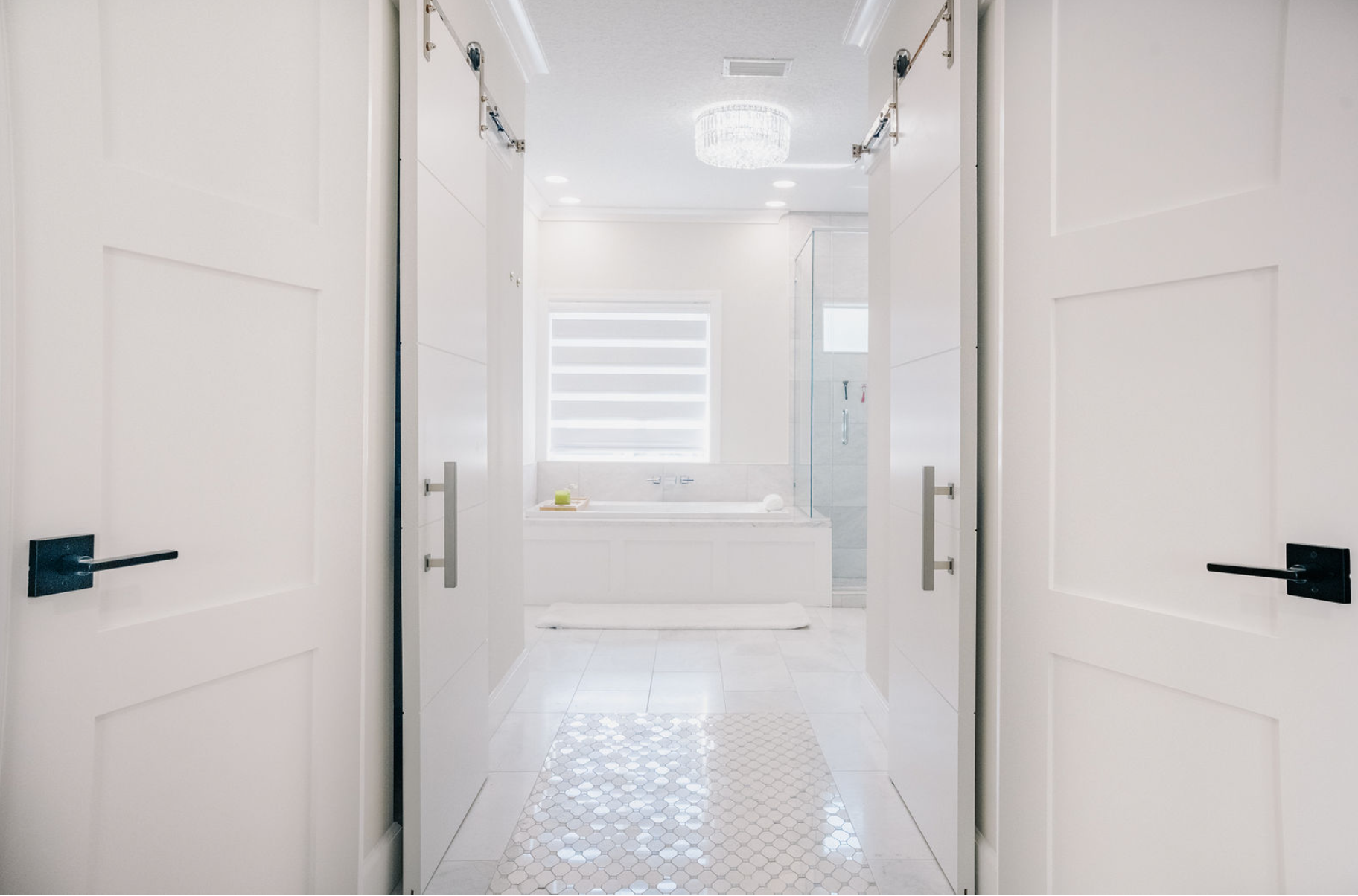
By Rita Narcisse
•
March 20, 2025
At Nouveau International Design, we believe that a well-designed space should stand the test of time, not only in quality but in aesthetic appeal. When our clients approached us to redesign their main bathroom, they had one request: to create a space that exuded grandeur and sophistication—a retreat that felt timeless, elegant, and undeniably luxurious. From the very beginning, we envisioned a bathroom that would transport them to an era of opulence, where every detail was meticulously crafted to elevate the everyday experience. We carefully curated materials and finishes that would exude refinement and grace, ensuring that this space wouldn’t just follow fleeting design trends but would instead become a generational masterpiece. The Power of Marble: A Timeless Foundation For the flooring, we selected honed marble—its soft, velvety finish adding an understated yet powerful sense of sophistication. Unlike polished marble, honed marble offers a matte surface that enhances the natural beauty of the stone while providing a subtle, inviting texture underfoot. This choice not only ensures longevity but also imbues the space with a classic charm reminiscent of old-world European estates. A Shower That Stuns: Decorative Marble Patterns Stepping into the shower is an experience all its own. To contrast the honed marble floors, we introduced an intricate decorative marble pattern tile for the shower floor and niche. This artful touch adds a layer of visual intrigue, blending elegance with craftsmanship in a way that makes a statement without overwhelming the senses. The delicate veining of the marble flows seamlessly, creating a feeling of movement and luxury that envelops the space. Designing for a Lifetime of Luxury Every decision in this bathroom was made with the intent of creating something that would last—not just for years, but for generations. This is not fast interior design. This is generational design. The materials we selected, the craftsmanship we prioritized, and the attention to detail we upheld ensure that this space will remain as stunning and functional decades from now as it is today. Now, when our clients step into their main bathroom, they are transported to a world of elegance and grace. It’s more than a room—it’s an experience, a daily reminder that luxury and quality are timeless. At Nouveau International Design, we don’t just design spaces; we create legacies.

By Rita Narcisse
•
March 20, 2025
There’s something truly special about designing a space that reflects the next chapter of a family’s life. For this project, we took a dining room from a traditional, dark aesthetic to a modern, light-filled sanctuary that radiates warmth and sophistication. Earth tones set the foundation for this inviting space—warm taupes, deep terracottas, and soft neutrals create a natural harmony that feels both grounded and fresh. We layered mixed metals—brushed brass and matte black—to add depth and a touch of modern elegance. A statement buffet console anchors the room, offering both function and beauty. With sleek lines and a refined finish, it provides ample storage while doubling as a display for curated decor, ambient lighting, and those special pieces that make a house feel like home. Every detail was carefully considered, from the soft yet structured dining chairs to the subtle sparkle of the chandelier that casts a warm glow over family gatherings. This is a space designed not just for today, but for the many memories this growing family will create in the years ahead. Light, airy, and effortlessly elegant—this dining room is a perfect example of how thoughtful design can turn a house into a home
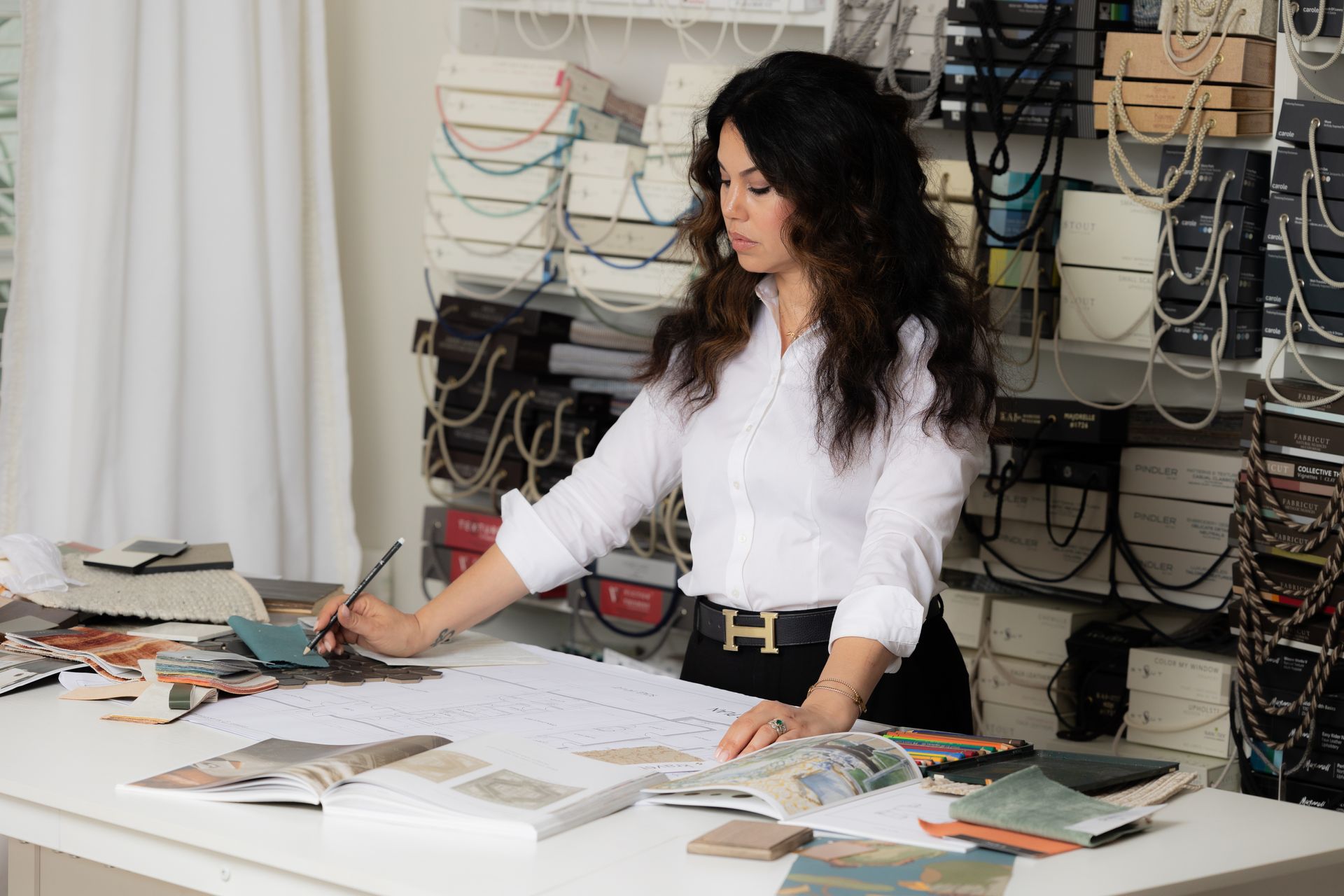
By Rita Narcisse
•
March 11, 2025
Hiring an interior designer is an investment in your home, ensuring a seamless process that saves you time, eliminates guesswork, and delivers a space that is both functional and beautiful. At Nouveau International Design, we make the journey smooth and stress-free. Here’s how we work with clients from the first inquiry to the final reveal. Step 1: Initial Contact & Discovery Call The process begins when a client visits our website and fills out the client contact form. From there, we schedule a 15-minute discovery call to discuss the project, goals, and budget. This step is crucial to ensure we’re the right fit for one another. Step 2: On-Site Consultation If both parties decide to move forward, we schedule a walk-through at the project location. This allows us to see the space, assess the scope, and discuss ideas. If everything aligns, we put a contract in place—professionally drafted by our attorney—to officially start the project. Step 3: Planning & Design Once the contract is signed, we begin pulling the project together: ✔️ Site measurements and documentation ✔️ Mood boards & design concepts for direction ✔️ Contractor coordination (if needed) for structural work If a contractor is required, they’ll meet with the designer and client on-site to review details. If the project is focused on furnishings and decor, we create two initial design boards, refining them into a final selection that captures the vision. Step 4: Procurement & Installation Once selections are finalized, we handle all purchasing and logistics, ensuring a cohesive look throughout the space. Items arrive at our warehouse, and we schedule an installation day to bring the design to life. If renovations are involved, demo and installation begin in coordination with our trusted trades. Step 5: The Big Reveal & Photoshoot Once everything is in place, we do a final walk-through with the client to ensure every detail is perfect. We then schedule a professional photoshoot to capture the transformation for our portfolio. Why Work with a Designer? Hiring a designer removes the guesswork from procurement, ensures a seamless design flow, and connects clients with the best resources and trades. The result? A beautifully designed space that reflects your vision—without the stress. Ready to start your design journey? Contact Nouveau International Design today ! Let’s create something incredible together.
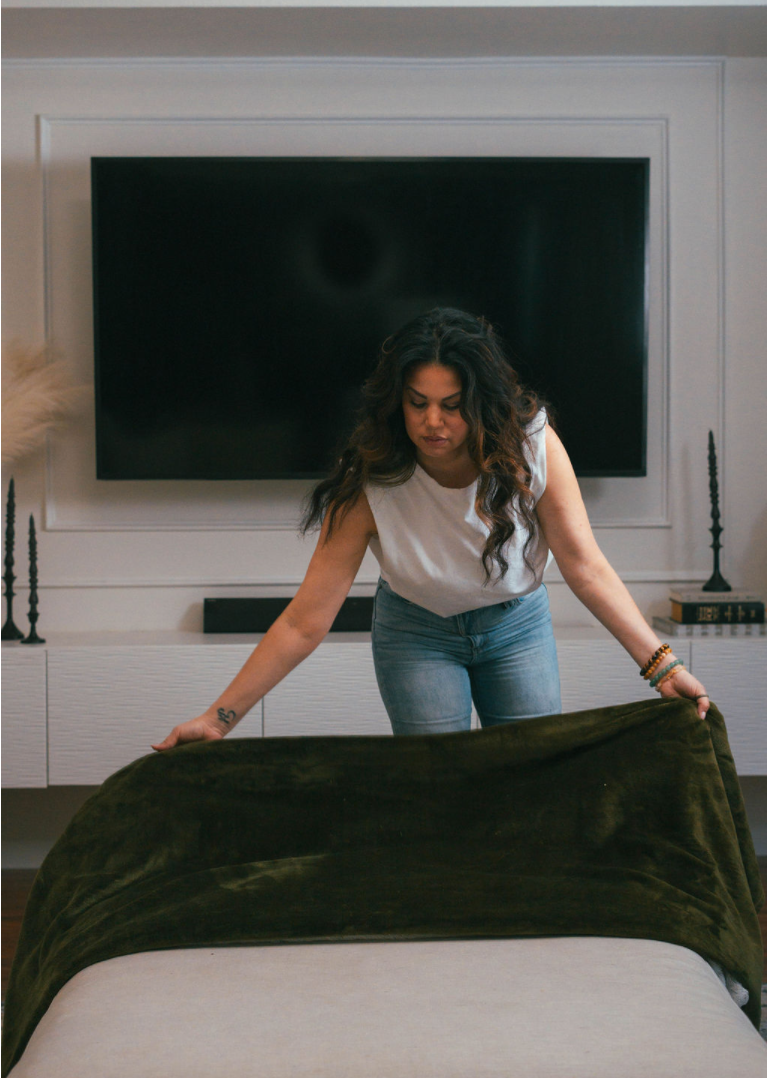
March 10, 2025
Buying or selling a home is a milestone moment, filled with excitement, anticipation, and sometimes a little bit of stress. A trusted realtor helps guide you through the buying or selling process, ensuring you find the right home or the right buyer. But what happens once the deal is done? That’s where Nouveau International Design steps in to transform a house into a home—or, if you’re selling, to elevate your space for maximum appeal. When You Buy: Designing a Home That Reflects You Moving into a new home can be both exhilarating and overwhelming. While the bones of the space might be perfect, making it truly yours requires a designer’s touch. That’s where our interior design services come in: ✅ Personalized Design Solutions – Whether you’re looking for a full-scale remodel or just need help curating furniture and décor, we tailor every design to your personal style and functional needs. ✅ Space Planning & Optimization – A home that looked great during a showing may need adjustments to fit your lifestyle. We help you reimagine the layout, maximize space, and create a flow that works for you. ✅ Turnkey Styling & Settling-In Assistance – The moving process can be exhausting. We provide stress-free services, from selecting paint colors and lighting to sourcing furniture, so you can focus on enjoying your new home. When You Sell: Elevating Your Home’s Market Value If you’re thinking about selling, an interior refresh can significantly impact your home’s value. First impressions matter, and well-designed spaces attract buyers faster and often sell for more. ✅ Pre-Sale Staging & Revamp – A fresh coat of paint, updated lighting, or stylish furniture arrangements can make all the difference in how buyers perceive your home. ✅ Remodeling for ROI – Strategic upgrades—such as modernized kitchens, spa-like bathrooms, or custom built-ins—help you maximize return on investment (ROI) and stand out in the market. ✅ Creating a Move-In-Ready Space – Buyers are more likely to fall in love with a home that feels polished, inviting, and turn-key. We work with your realtor to ensure your property is positioned as a must-have in the market. Love It or List It? Either Way, We’ve Got You Covered Maybe you bought your home with the intention of staying, but now you’re considering selling. Or perhaps you’re thinking about renovating instead of moving. Whatever the case, working with Nouveau International Design gives you the flexibility to love your home again or prepare it for the next buyer. A well-designed space is not just about aesthetics—it’s an investment in your comfort, lifestyle, and financial future. Whether you’re settling in, revamping, or getting ready to sell, our team is here to ensure your home reaches its full potential. Let’s Elevate Your Space If you’ve just bought a home, let us help you make it your own. If you’re selling, let us help you maximize your return. And if you’re unsure, let’s chat about your options—because no matter where you are in your journey, design makes all the difference. 📞 Ready to elevate your space? Contact Nouveau International Design today!
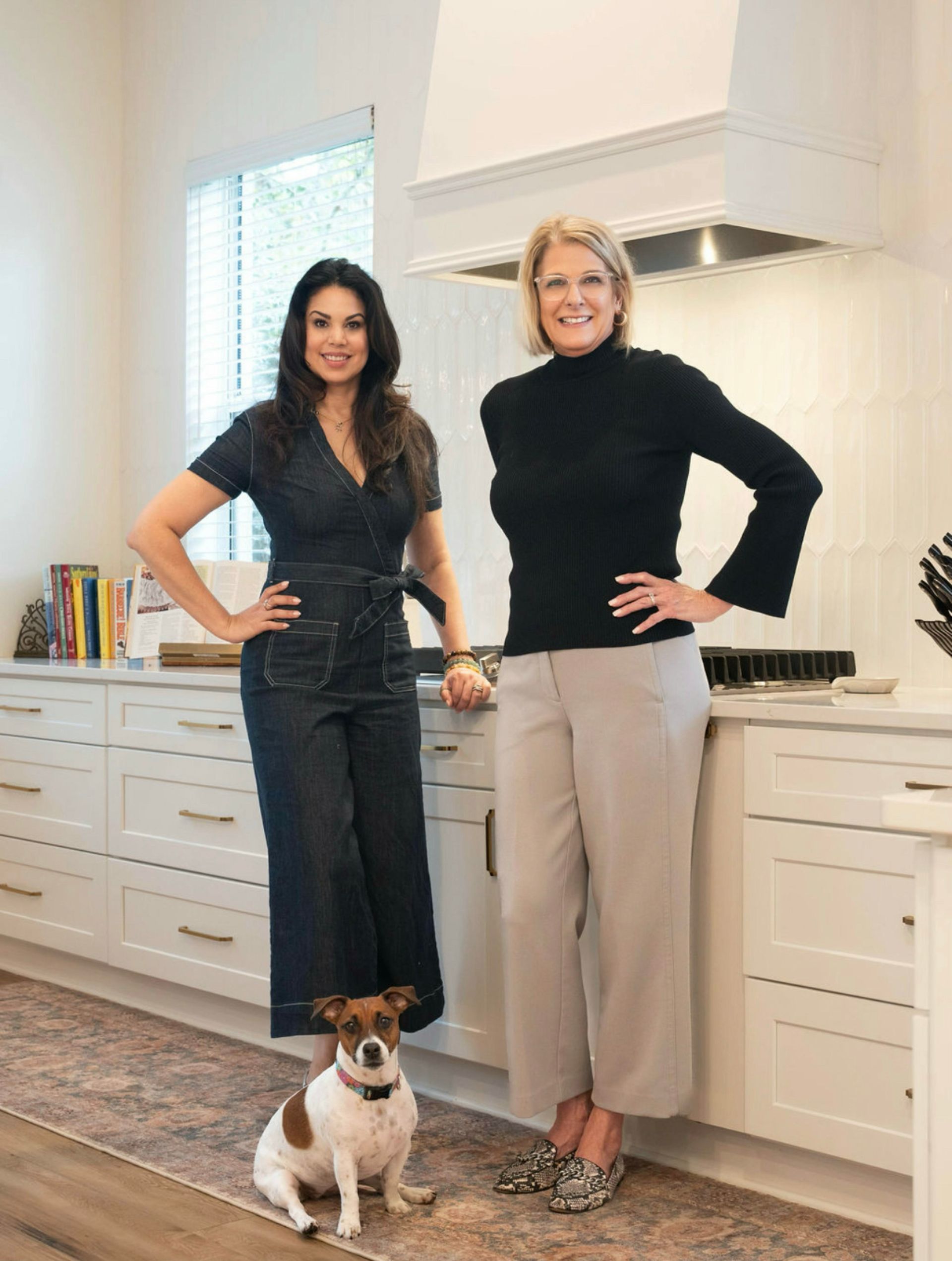
February 5, 2025
At Nouveau International Design, we know that your home isn’t just yours—it belongs to your pets, too! Whether it’s the fur-covered furniture, paw-printed floors, or their favorite sunbathing spot, our four-legged friends leave their mark everywhere. But who says you have to sacrifice style for your fur baby? Designing a pet-friendly home can be both chic and functional, and we’re here to help you make it happen. So let’s dive in and create a space that’s as fabulous as it is pet-friendly! 1. Designated Pet Zones (a.k.a., Keeping Your Sanity) Just like you have your favorite cozy corner, your pet deserves a designated retreat too. Think beyond the traditional pet bed—how about a stylish nook that blends seamlessly with your decor? For Dogs: A chic dog bed that complements your aesthetic (no more ugly, fraying pillows!). For Cats: Hidden litter box furniture—because no one wants to see (or smell) that! Bonus Tip: Elevate their space with plush textures, matching colors, and soft lighting. 2. Pet-Friendly Fabrics: The Ultimate Challenge Cats claw, dogs shed, and the battle against pet messes is real. The solution? Pet-friendly fabrics! Go for: Performance fabrics like Sunbrella or Crypton—stain-resistant, durable, and easy to clean. Avoid: Velvet (hello, fur magnet!) and silk (your cat’s new scratching post). Leather? Yes! Easy to wipe down and doesn’t trap fur. Pro Tip: Match fabric colors to your pet’s fur—it’s built-in camouflage for pet hair between cleanings! 3. Choosing Rugs: Because Paws Track In EVERYTHING Rugs take a beating in a pet-friendly home, so choose wisely: Skip: High-pile and shag rugs (tempting but a nightmare for fur and dirt). Go for: Indoor-outdoor rugs—stylish, easy to clean, and built to handle pet chaos. Washable rugs? YES! Toss them in the washing machine for an instant refresh. Pro Tip: Choose a rug color similar to your pet’s fur—it’s like magic for hiding stray hairs! 4. Pet-Safe Plants: Because Fluffy Loves to Chew You love greenery, but some plants are toxic to pets. Keep it safe with: Pet-friendly picks: Spider plants, Boston ferns, and areca palms. Faux plants? Yes! They add beauty without the risk (or watering duty!). 5. Stylish Storage: Hide Those Toys! Your pet’s toy collection is out of control? Keep it organized and stylish! Chic baskets (think wicker or rattan) to blend with your decor. Built-in storage for leashes, toys, and grooming supplies. Multi-functional furniture: Storage benches or ottomans that double as toy chests. 6. Durable Flooring: Your Secret Weapon From zoomies to accidental spills, pets put floors to the test. Here’s what works best: Top picks: Luxury vinyl, tile, and scratch-resistant hardwoods like oak or maple. Avoid: Soft woods like pine—they won’t survive the claw test! 7. Making Your Pet Part of the Design Why not celebrate your pet in your decor? Pet portraits or framed photos for a personalized touch. Stylish food bowls that match your kitchen aesthetic. Fun accent walls with pet-themed artwork. Pro Tip: A dedicated pet station with hooks for leashes and a treat jar adds function and style. Balance is Key At Nouveau International Design , we believe in blending durability with beauty. Your home should work for everyone living in it—including your furry best friends. With the right design choices, you can create a space that’s stylish, practical, and pet-approved. And let’s be real—your pet is probably going to nap on that velvet couch anyway… but at least the rest of your home will look fabulous! Want to create a pet-friendly, designer-approved space? Let’s make it happen together!
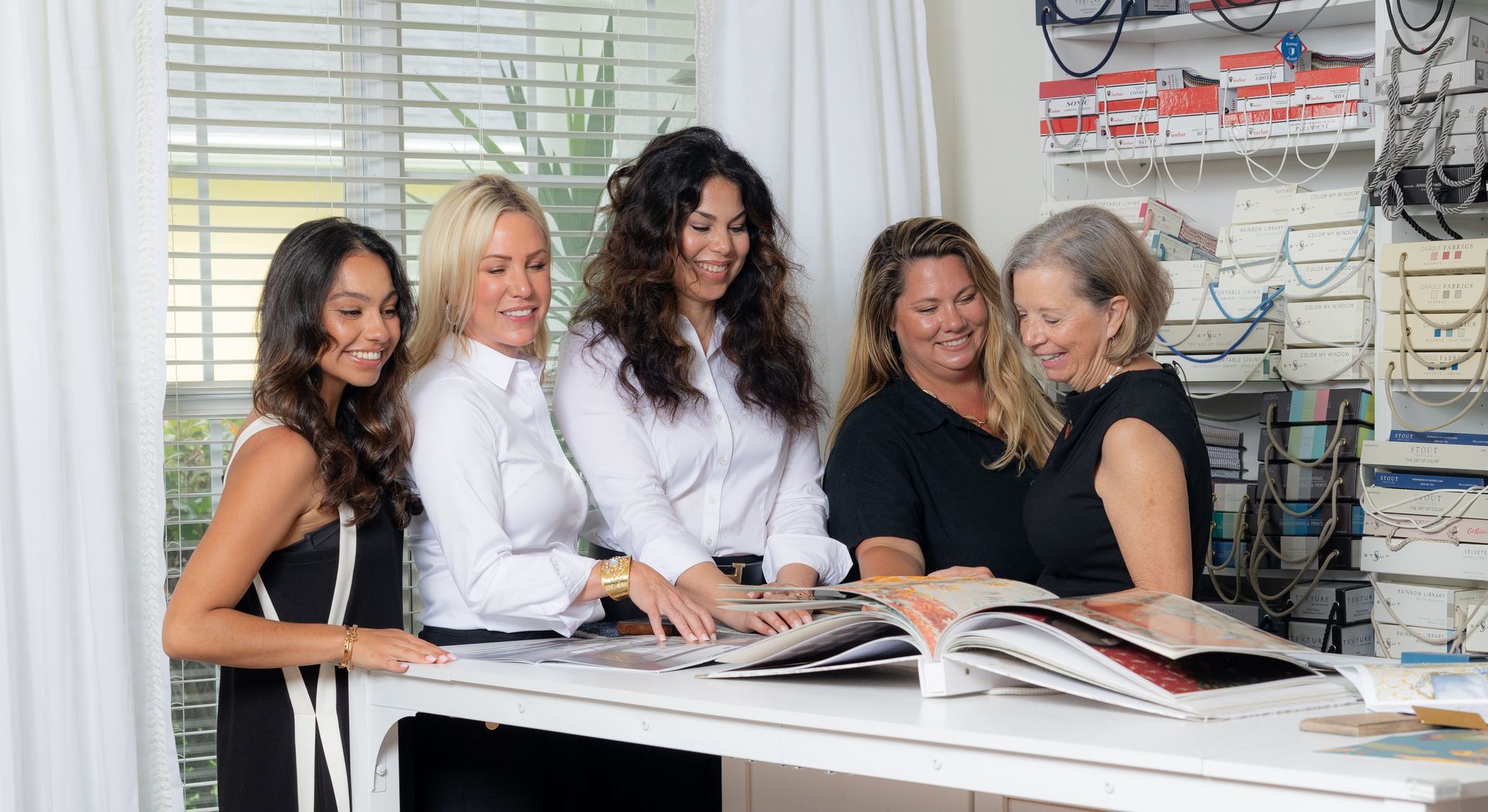
February 5, 2025
Have you ever walked into a room and thought, “I wish my home looked like this”? You’re not alone! Finding your unique design style can be as exhilarating as discovering a new favorite hobby. Whether you’re redecorating a single room or overhauling your entire home, knowing your design style is the first step toward creating a space that truly reflects who you are. But where do you start? With so many styles to choose from—cozy chic, bold and modern, rustic charm, or classic elegance—it can be overwhelming to pinpoint what resonates with you. That’s where we come in! Our fun and interactive quiz will guide you through a series of questions designed to reveal your perfect interior aesthetic. In just a few minutes, you’ll gain personalized insights into your design preferences, helping you make informed choices about colors, furnishings, and decor. Ready to transform your space into a haven that feels uniquely you? Let’s dive in and discover your design style! Take Our Quiz! 1. Which color palette best describes your ideal living space? A) Soft pastels and neutrals B) Bold, vibrant hues C) Earthy tones and rustic colors D) Classic black, white, and gray 2. How would you describe your ideal weekend? A) Relaxing with a good book in a cozy nook B) Attending a lively party with friends C) Exploring nature or working on a DIY project D) Enjoying a sophisticated dinner at a high-end restaurant 3. What type of art do you prefer? A) Abstract and modern B) Pop art and colorful prints C) Vintage posters and handcrafted pieces D) Classic and elegant paintings 4. Choose a vacation destination that excites you the most? A) A tranquil beach resort B) A bustling city full of nightlife C) A charming countryside or mountain retreat D) A chic and historic European city 5. How do you feel about patterns in your decor? A) Minimal and subtle patterns B) Bright and bold patterns C) Textured and natural patterns D) Timeless and geometric patterns 6. What’s your favorite type of furniture? A) Soft, plush, and comfy B) Modern and statement-making C) Rustic and handcrafted D) Sleek and refined 7. What’s your ideal lighting situation? A) Warm and soft, with lots of lamps and candles B) Bright and energizing with unique fixtures C) Natural light with a touch of vintage charm D) Elegant and polished with chandelier accents 8. How do you like to accessorize your space? A) With cozy throws, cushions, and personal knick-knacks B) With bold, eye-catching sculptures and trendy accents C) With handcrafted items and vintage finds D) With classic, timeless pieces and elegant details Your Results! Mostly A’s: Cozy Chic Your style is all about comfort and tranquility. You love soft, neutral colors and plush furnishings that create a relaxing environment. Think cozy nooks with plenty of throw pillows and soft lighting. Mostly B’s: Bold and Modern You’re drawn to vibrant colors and contemporary designs. Your space likely features statement pieces and dynamic patterns. Embrace bright, energetic decor and unique, eye-catching elements. Mostly C’s: Rustic and Natural Your style is earthy and grounded, with a love for natural textures and vintage charm. You prefer warm, earthy tones and handcrafted items that bring a sense of nature into your home. Mostly D’s: Classic Elegance You appreciate timeless and sophisticated design. Your space is likely decorated in classic colors like black, white, and gray, with elegant furniture and refined accessories that exude luxury. Let’s Bring Your Design Dreams to Life! Now that you have a glimpse of your ideal design style, let Nouveau International Design help bring it to life. Whether you’re looking for a complete home transformation or just need guidance on a single room, our expert team is here to curate a space that reflects your unique personality and lifestyle. Contact us today and let’s create something extraordinary together! Please note: This quiz is intended to provide a general idea of your probable design style.
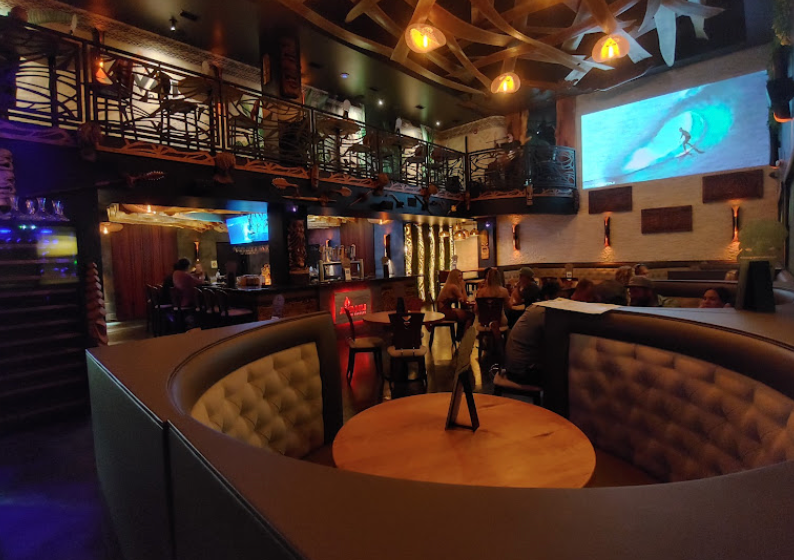
By Rita Narcisse
•
August 5, 2024
In today's competitive market, creating an inviting and functional commercial space is crucial for success. Whether you're launching a startup, expanding your business, or revamping an existing space, the design and build process can significantly impact your brand's image and operational efficiency. This is where Nouveau International excels, offering top-tier commercial design and build services that transform your vision into reality. Understanding Commercial Design & Build Services Design & Build is a streamlined project delivery method that combines both design and construction services under one roof. Unlike traditional methods, where design and construction are handled separately, the design & build approach fosters collaboration, reduces timelines, and often leads to cost savings. Why Choose Nouveau for Your Commercial Project? Nouveau International stands out in the commercial design & build landscape for several reasons: Integrated Approach: At Nouveau, we believe in a holistic approach. Our team of architects, designers, and builders work closely together from the project's inception to its completion. This ensures that every aspect of the design is practical, buildable, and aligned with your business goals. Innovative Design: We pride ourselves on creating innovative and aesthetically pleasing designs that reflect your brand's identity. Our designers stay abreast of the latest trends and technologies to provide solutions that are not only beautiful but also functional and sustainable. Client-Centric Process: Your vision is our priority. We engage with clients through every step, ensuring transparency and incorporating feedback to deliver a space that exceeds expectations. Efficiency and Quality: Time is money, especially in the business world. Nouveau's design & build model ensures projects are completed on time and within budget without compromising quality. Our meticulous planning and execution minimize disruptions, allowing you to focus on your business operations. Sustainability: We understand the importance of sustainability in today’s world. Nouveau integrates eco-friendly practices and materials into our projects, helping your business reduce its carbon footprint while also appealing to environmentally conscious customers. The Nouveau Process: From Concept to Completion Consultation and Planning: We start by understanding your business, goals, and vision. This initial consultation helps us tailor our approach to meet your specific needs. Design Development: Our design team creates detailed plans and renderings, providing you with a clear visual of the final product. We iterate on these designs based on your feedback, ensuring alignment with your vision. Budgeting and Scheduling: Accurate budgeting and scheduling are critical. We provide detailed cost estimates and timelines, keeping you informed and involved throughout the process. Construction: Our skilled builders bring the designs to life with precision and attention to detail. Regular site visits and updates ensure that the project stays on track. Final Touches and Handover: Once construction is complete, we conduct thorough inspections and add the final touches to ensure everything is perfect. We then hand over the keys to your new space, ready for business. Case Studies: Success Stories with Nouveau Oceans Eight Condominiums: Our team, including talented designers Rita Narcisse and Lindsey Adams, recently undertook a beautification remodel for Oceans Eight Condominiums. The project involved creating a luxurious and modern aesthetic while enhancing functionality for residents and guests. Tech Startup HQ: For a cutting-edge tech startup, Nouveau designed a sleek, open-plan office that fosters collaboration and creativity. The space features state-of-the-art technology, ergonomic furniture, and sustainable materials. Retail Boutique: A high-end retail boutique approached Nouveau for a complete redesign. We created an elegant, inviting space that showcases products beautifully and enhances the shopping experience. Partner with Nouveau for Your Next Project Transforming a commercial space is a significant investment, but with the right partner, it can also be a rewarding one. Nouveau International combines expertise, innovation, and a client-first approach to deliver exceptional design and build services. Let us help you create a space that not only meets your business needs but also inspires and impresses everyone who walks through your doors. Ready to elevate your business space? Contact Nouveau International today and let's start building your future. By incorporating the unique strengths and values of Nouveau International, this blog aims to position the company as a leading provider of commercial design and build services, appealing to potential clients looking for quality and innovation in their business spaces.
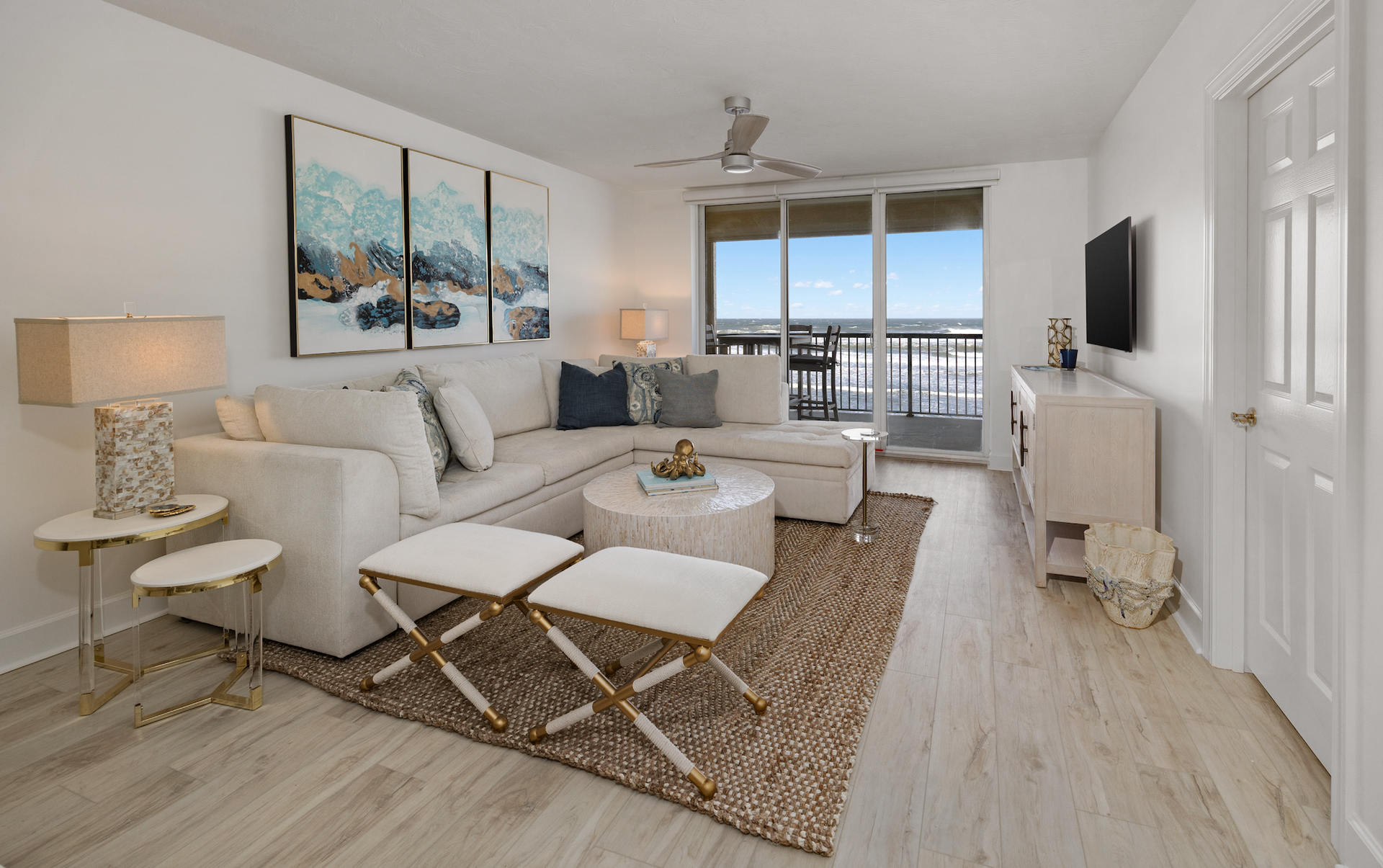
By Rita Narcisse
•
August 5, 2024
In today's world, sustainability is more than just a buzzword; it's a vital approach to designing spaces that are not only beautiful but also kind to the environment. Sustainable interior design focuses on using eco-friendly materials, promoting energy efficiency, and creating spaces that prioritize the health and well-being of occupants. Here’s how you can incorporate sustainable solutions into your interior design projects. 1. Choose Eco-Friendly Materials One of the foundational aspects of sustainable interior design is the use of materials that have a low environmental impact. This means opting for resources that are renewable, recyclable, or sustainably sourced. Here are some materials to consider: Reclaimed Wood: Using reclaimed wood for flooring, furniture, or accent walls reduces the demand for new timber and gives a second life to existing materials. Bamboo: A rapidly renewable resource, bamboo is an excellent alternative to traditional hardwoods. It can be used for flooring, cabinetry, and even textiles. Recycled Metal and Glass: These materials not only reduce waste but also add a modern and chic aesthetic to any space. 2. Embrace Low-VOC and Natural Paints Volatile Organic Compounds (VOCs) are harmful chemicals found in many traditional paints, which can negatively impact indoor air quality. Low-VOC or zero-VOC paints are a healthier alternative, releasing fewer pollutants and contributing to a cleaner, safer indoor environment. Additionally, natural paints made from ingredients like clay, milk protein, and natural pigments offer an eco-friendly and aesthetically pleasing option. 3. Opt for Sustainable Textiles Textiles play a crucial role in interior design, from upholstery to drapery. Choose fabrics that are made from natural fibers like organic cotton, linen, wool, or hemp. These materials are biodegradable and often produced without harmful pesticides and chemicals. Additionally, look for textiles that are certified by organizations like the Global Organic Textile Standard (GOTS) or OEKO-TEX, ensuring they meet strict environmental and social criteria. 4. Incorporate Energy-Efficient Solutions Energy efficiency is a key component of sustainable interior design. By reducing energy consumption, you can lower utility bills and decrease your carbon footprint. Here are some strategies to consider: LED Lighting: LED bulbs use significantly less energy than traditional incandescent bulbs and have a longer lifespan, making them a cost-effective and eco-friendly choice. Smart Home Technology: Implement smart thermostats, lighting controls, and energy-efficient appliances to optimize energy use and reduce waste. Natural Light: Design spaces that maximize natural light, reducing the need for artificial lighting. Use large windows, skylights, and light-reflecting surfaces to brighten interiors naturally. 5. Water Conservation Water conservation is another important aspect of sustainable interior design. Install water-saving fixtures such as low-flow faucets, showerheads, and dual-flush toilets to reduce water usage without compromising performance. Additionally, consider incorporating greywater systems that recycle water from sinks and showers for use in irrigation and flushing toilets. 6. Focus on Indoor Air Quality Healthy indoor air quality is essential for the well-being of occupants. Besides using low-VOC paints and sustainable textiles, consider the following: Houseplants: Integrate houseplants into your design to improve air quality naturally. Plants like the snake plant, spider plant, and peace lily are known for their air-purifying properties. Ventilation: Ensure proper ventilation in all areas to reduce indoor air pollutants. This can be achieved through well-placed windows, exhaust fans, and air purifiers. 7. Design for Longevity Sustainability also means creating spaces that stand the test of time. Choose timeless designs and high-quality materials that will not need frequent replacement. This reduces waste and ensures that your space remains stylish and functional for years to come. Conclusion Sustainable interior design is about making conscious choices that benefit both the environment and the people who inhabit the spaces. By selecting eco-friendly materials, promoting energy and water efficiency, and focusing on indoor air quality, you can create beautiful, sustainable interiors that inspire and nurture. Embrace these principles in your next design project, and contribute to a healthier, greener world. By implementing these sustainable interior solutions, you not only enhance the aesthetic and functional qualities of your spaces but also make a positive impact on the environment. Let's commit to designing for a sustainable future, one beautiful space at a time.
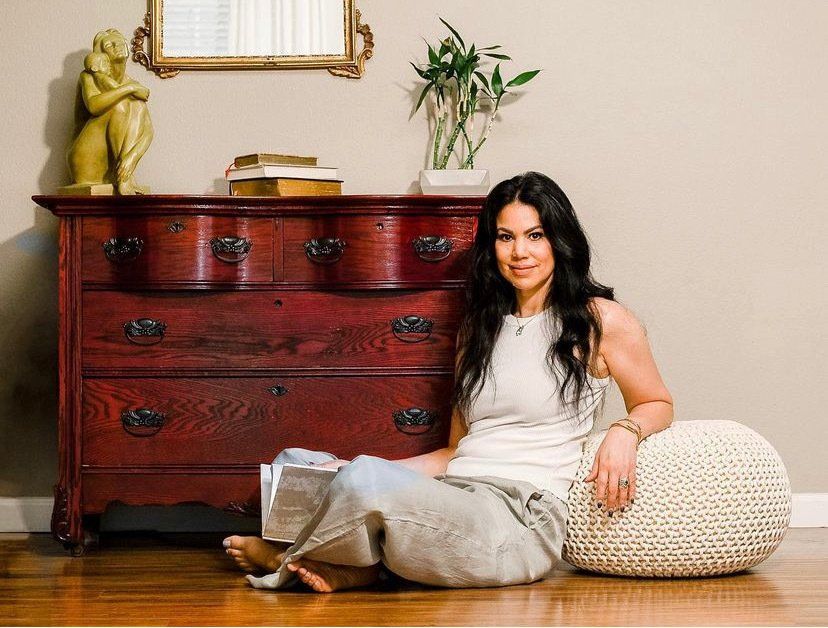
April 12, 2024
At this juncture, you've concluded that engaging an interior designer is the next step forward (if not, take a moment to explore our article on why hiring an interior designer is paramount). Perhaps you've attempted the DIY route and found it overwhelming. Maybe you've acknowledged that you simply don't have the desire to tackle it alone. Or it could be that you've witnessed the transformative touch of an interior designer in a friend's home and crave a similar experience. Irrespective of the catalyst, you're poised to enlist the expertise of a designer, yet you're uncertain where to begin. Fear not, for here's your roadmap: Start by delving into some introspective questions, either solo or with your partner, if you're co-owners of the space. You might be tempted to jump ahead, eager to dive into the nitty-gritty details. However, taking this preliminary step will streamline the process with your Nouveau interior designer and pave the way for a more extraordinary outcome." Here are five questions individuals often consider before hiring an interior designer Cost and Budget: How much am I willing to invest in professional interior design services, and does my budget align with the level of expertise and quality I desire? Style and Aesthetic Preferences: What is my personal style, and how do I envision it being reflected in my living space? Am I seeking a specific design style or theme, such as modern, traditional, or eclectic? Decision-Making Process: Am I comfortable relinquishing control and entrusting key design decisions to a professional designer? How much input do I want to have in the design process? Scope of Work: What specific areas or aspects of my home do I want the interior designer to focus on? Am I looking for comprehensive design services, including space planning, furniture selection, and decor, or do I have a more limited scope in mind? Timeline and Availability: What is my timeline for completing the project, and how flexible am I with scheduling and availability for design consultations and project implementation?
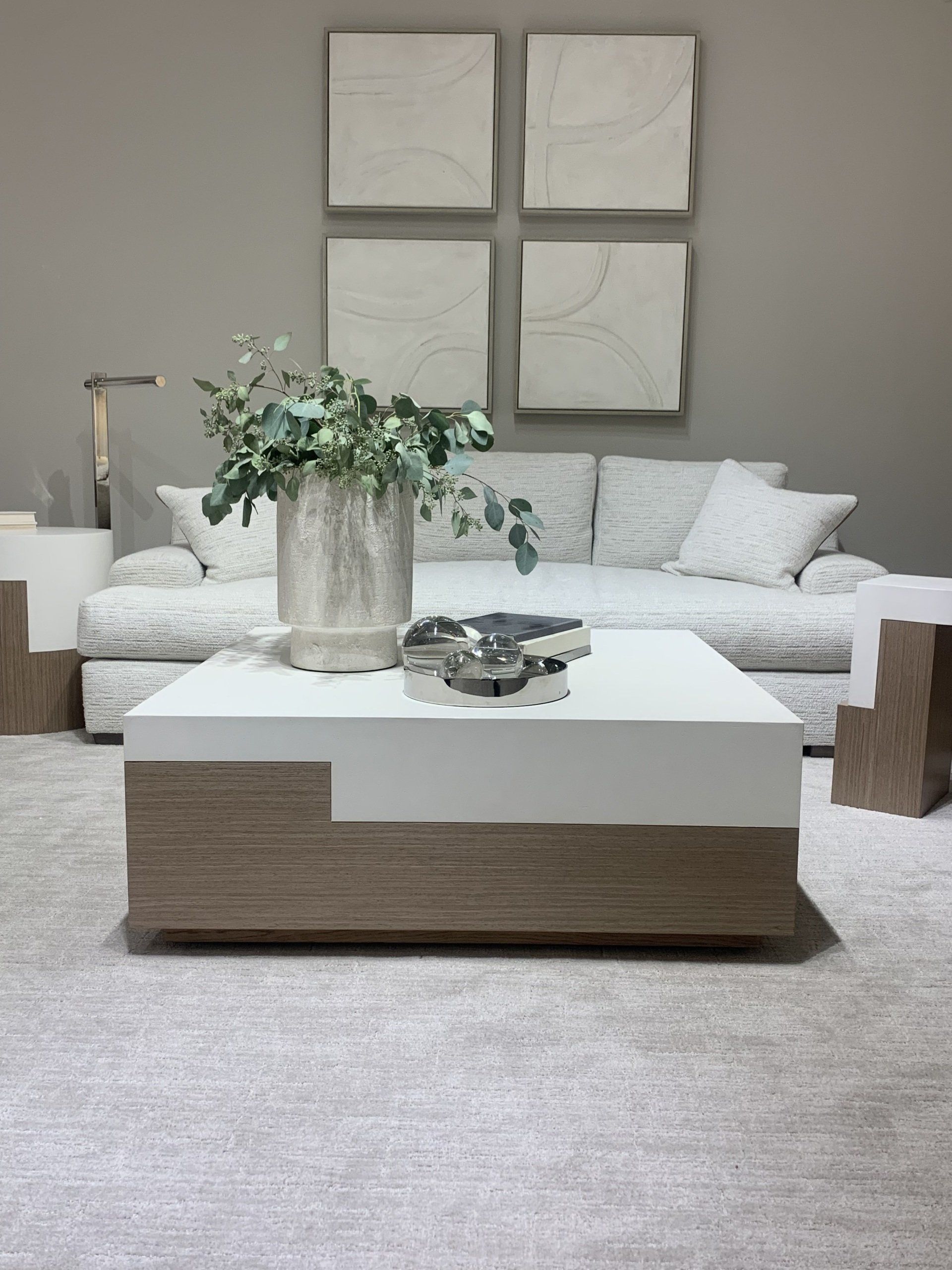
April 12, 2024
Navigating the realm of interior design can often feel like traversing uncharted territory, leaving many perplexed about the role and necessity of interior designers. To shed light on this enigma, let's explore a series of common sentiments. Reflect on whether any resonate with you: "My home lacks a certain je ne sais quoi, and I can't quite pinpoint why." "I'm uncertain about my personal style, let alone how to translate it into my home decor." "Functionality seems to be missing from my living space, and it's no longer meeting my needs." "Between work, family, and other obligations, I simply don't have the time to create a home that truly feels like mine." "My partner and I have conflicting design tastes, and we're struggling to find common ground." "Choosing paint colors feels like an overwhelming task—I never seem to get it quite right." "The sheer variety of options for furnishing and decorating my home leaves me feeling paralyzed by choice." "What exactly is 'shelf styling,' and how do I achieve it?" "I yearn for a living space that reflects my personality and feels authentically me, but I'm uninspired by the options I see." "I'm embarking on the journey of building a new home, and I want it to be a reflection of my vision and lifestyle." If any of these sentiments strike a chord with you, it may be time to consider the invaluable role of an interior designer. Let's explore how enlisting the expertise of a designer can transform not only your living space but also your entire experience of home.
WEBSITE LINKS

CONTACT DETAILS
Design Services: 386.333.0041
Construction Services: 386.631.8139
Email : Info@NouveauInternational.com
SUBSCRIBE TO OUR NEWSLETTER
Contact Us
Thank you for contacting us.
We will get back to you as soon as possible.
We will get back to you as soon as possible.
Oops, there was an error sending your message.
Please try again later.
Please try again later.
BUSINESS HOURS
- Mon - Fri
- -
- Saturday
- Appointment Only
- Sunday
- Closed
PAYMENT OPTIONS






Content, including images, displayed on this website is protected by copyright laws. Downloading, republication, retransmission or reproduction of content on this website is strictly prohibited. Terms of Use
| Privacy Policy
